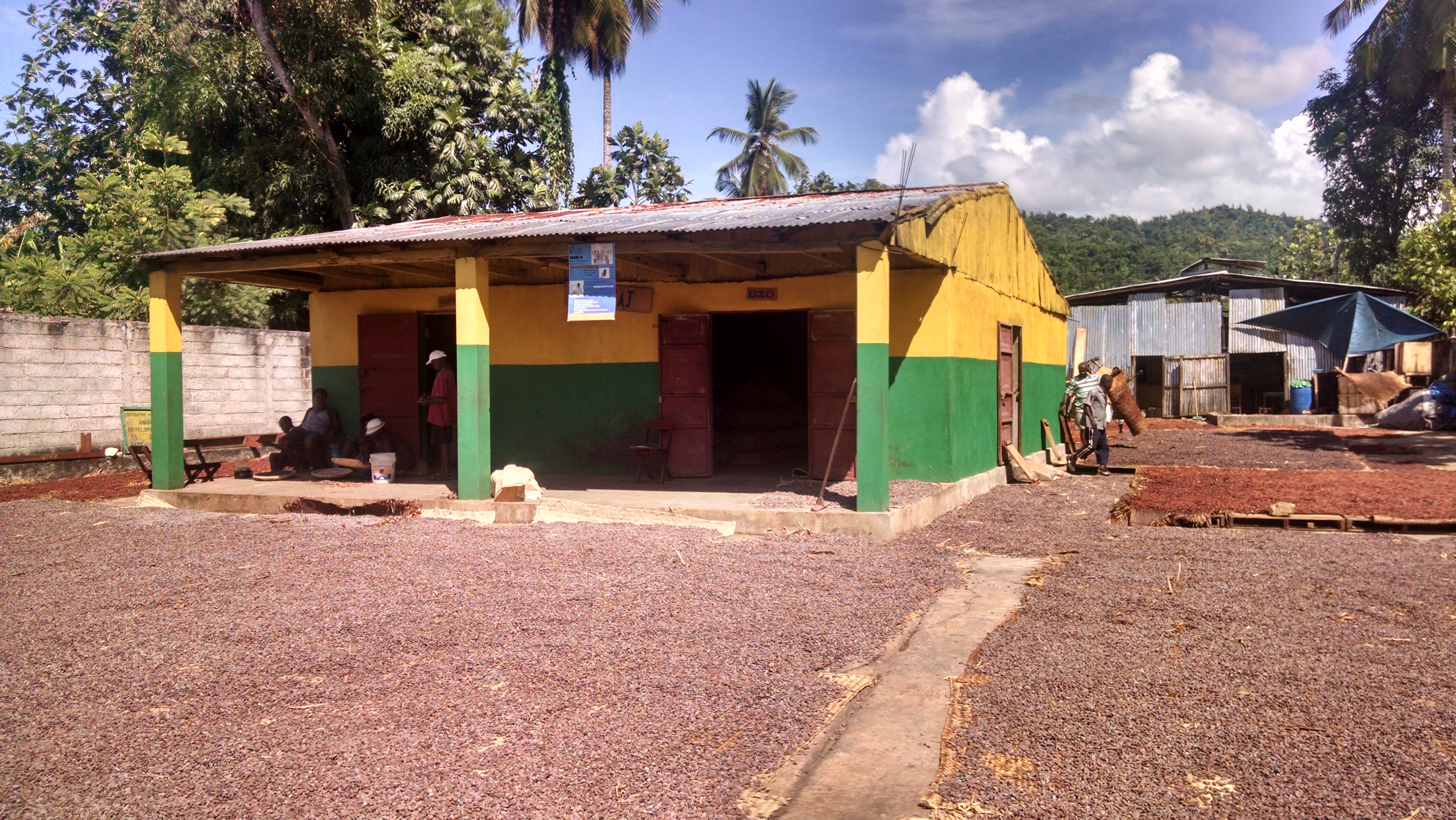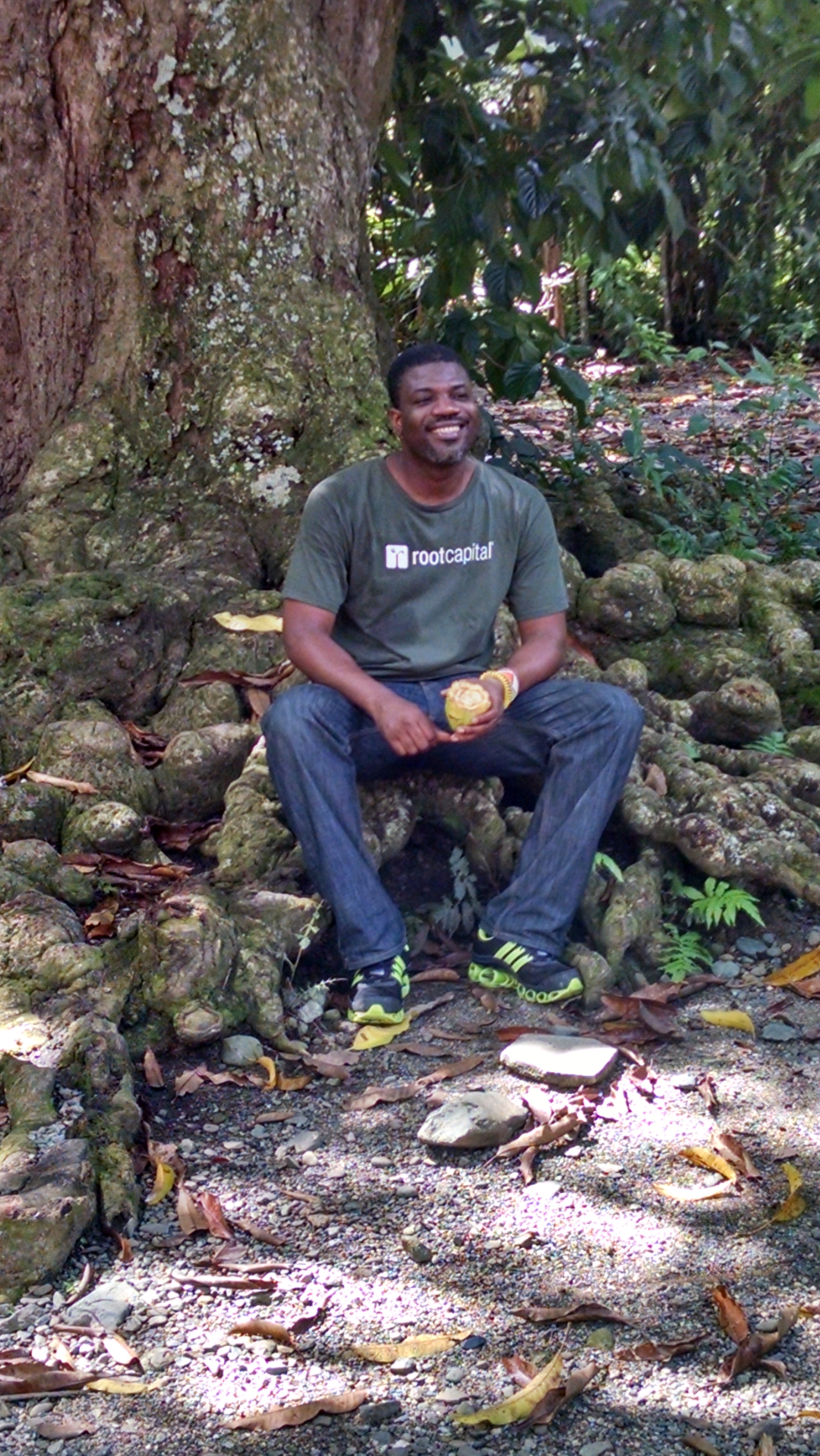Jesse Last is the Cocoa Sourcing Manager at Taza Chocolate and former Value Chain Relations Manager at Root Capital. This piece originally appeared on Taza’s blog.

The dirt road before us drops down from beautiful, rolling hills into the tiny beach town of Dame-Marie, disappearing into the white sand and blue waves of the Caribbean. An eight-hour drive from Port-Au-Prince, Dame-Marie is located on the southwest tip of Haiti. Here, the farmer group Cooperative Agricole Union Developpement (“CAUD”) collects the cacao beans harvested by smallholder producers. The season is in full swing, and there are so many beans drying in the sun that we – Alex Whitmore, the Co -Founder and Managing Director of Taza Chocolate, and I – literally tip-toe around to avoid stepping on them. As the cooperative’s vice-president explains, this year CAUD has needed to turn farmers away due to the incredible volume being delivered – a good problem to have, no doubt!
The reason for the cooperative’s success is its buying strategy. Haiti’s traditional market structure involves multiple intermediaries, or “zombies” as these middlemen are not-so-affectionately known, each of whom takes a cut of the cacao’s final price. CAUD refuses to work with zombies, instead buying directly from farmers. This year, thanks to the financial liquidity provided by the agricultural lender Root Capital, CAUD has the cash it needs to pay farmers as soon as they deliver their harvest. This new model also incentivizes high quality production, which is critical to attracting specialty buyers such as Taza Chocolate.

Throughout our visit, we are blessed to be accompanied by Root Capital’s Patrick Dessources, a 6’6″ Haitian with a wide smile and an inspiring conviction in the potential of his country, and particularly the agricultural sector, to flourish. He serves as our guide and cultural ambassador, a deeply respected actor in the rural communities we visit. His presence allows us to understand and connect to the country in a way we could never do on our own, and as a result, to learn.
We learn that official statistics are rarely accurate and that the best way to gather information is through trusted networks. We learn that when in the town of Jeremie, you must stop to buy the delicious bread comparette – and bring back plenty for your friends in Port-au-Prince. We learn that the country cultivates 80 types of mango, and while the largest are exported, the smallest are the sweetest. We learn that while needed at times (e.g., directly following the 2010 earthquake), the continued, overwhelming presence of non-profits and free goods has distorted markets and undermined local economies. Perhaps most importantly, we learn that Haiti is not a country to be feared, pitied or avoided; that despite CNN’s “Breaking News” narrative, Haitians are not a mass of victims, but rather individuals with their own stories, livelihoods and agency.
After an afternoon spent with CAUD’s management, the sun begins to drop on our small group. An assorted mix of community members, from teenage boys to elderly women, pulls the now-dry cacao beans into the warehouse for overnight storage. Alex jumps up and begins to help, eliciting giggles and surprised looks from our hosts. As we shake hands with the cooperative’s members, we agree to be in touch. While the visit has been promising, there are still questions around fermentation practices and final quality; sourcing is rarely straightforward. Over the next several months, we will continue to communicate with CAUD and the other cacao businesses we met, both in Dame-Marie and in the country’s north. Our hope? That 2015 marks the beginning of a long and prosperous relationship between Taza Chocolate and Haiti’s smallholder cacao growers.

What do you think?